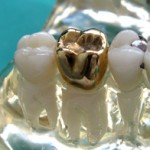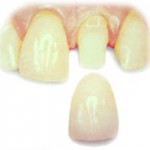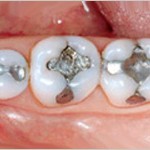What is a  dental filling?
A tooth consists of enamel,dentine, pulp and cementum. Enamel is the outermost layer which forms the crown of a tooth. Tooth surface is covered by a bacterial biofilm,known as plaque. The bacteria metabolizes sugar and releases acid which destroys the enamel. This process is called decay or dental caries. When oral hygiene is inadequate, dental decay progresses into the dentine layer and in later stage, into the pulp. Decayed tooth is weak and brittle, thus it becomes soft, forming what is called cavity. A tooth damaged by decay needs to be filled to restore its normal function, shape and strength.
When do you need a filling?
Only a dentist can decide whether you need a filling or not. Initial stages of dental caries can be reversed by practicing good oral hygiene. In the early stages, when the caries affects only the enamel ,the tooth is still intact and the affected area appears opaque on x-ray, as judged by the dentist. The dentist will advise toothbrushing using fluoridated toothpaste at least twice a day to reverse the progression of caries. Reversed caries will appear harder and darker in colour.
If caries progresses into the deeper layers of the tooth, you will feel pain and sensitivity which indicates that the caries has reached the dentine. When caries progresses into the deeper layers of tooth and cavity forms you will need to fill your tooth.
How a dental filling is done?
If the involved tooth is painful the dentist will first administer local anaesthesia to numb the it. Then the decayed tooth material is removed and the tooth cleaned. The dentist then fills the cavity with an appropriate filling material. The materials used for filling includes amalgam ( an alloy of mercury, silver, copper,tin and zinc), composite ( tooth coloured fillings), gold and porcelain. Fillings helps prevent further decay by sealing the tooth and avoiding ingress of bacteria.
Which is the most suitable type of  dental filling?
There is no one type of filling which is best for everyone. Different individual present with different types of complaint and damage. The suitable type of filling is determined by the extent of repair, whether you have allergies to certain materials, the location of the damaged tooth and the cost of material used.
There are various types of  dental filling materials available:
a) Gold
Many experts believe that gold is the best filling material due to it’s biocompatibility and strength. Gold fillings can last up to 20 years and is well tolerated by the gum tissues. One of the disadvantage of using this material is that the procedure requires multiple visit because it is not directly placed on the tooth. First the dentist takes an impression of the tooth. The inlay is then prepared the laboratory and finally cemented into place. The material is also very expensive, thus patients prefer cheaper material like amalgam.
b) Amalgam
Amalgam is an alloy of mercury, silver, tin, copper and zinc. It is relatively cheap and stronger compared to other filling materials. Amalgam filling can last up to 10 years. However, due to its dark colour amalgam is used in the back teeth and not in visible areas such as the front teeth.
c) Composite
Composite resin filling material is less stronger than amalgam but it is much preferred because it is matched to be the same colour as the natural teeth. It comes in different shades, which suits different individuals. The aesthetic value of composite makes it the material of choice for visible areas such as the front teeth. It is placed directly into the cavity. Composite may not be the ideal material for large fillings as it may chip or wear over time. It is also susceptible to stains from food such as coffee or tobacco. Composite lasts from 3 to 8 years.
d)Â Porcelain
Porcelain fillings are called inlays or onlays and are produced to order in a lab and then bonded to the tooth. They can be matched to the color of the tooth and resist staining. A porcelain restoration generally covers most of the tooth. Their cost is similar to gold.
If decay or a fracture has damaged a large portion of the tooth, a crown, or cap, may be recommended. Decay that has reached the nerve may be treated in two ways: through root canal therapy (in which nerve damaged nerve is removed) or through a procedure called pulp capping (which attempts to keep the nerve alive).

Gold crown



I didn’t realize that porcelain dental fillings can resist staining. Ever since I lost a tooth as a child when I was playing baseball, I’ve been pretty self-conscious about the gap in my teeth. A gold tooth has never caught my fancy, but because a porcelain tooth matches the color of the rest of my teeth and can’t get stained, I think I’ll speak with a dentist about getting a dental filling.